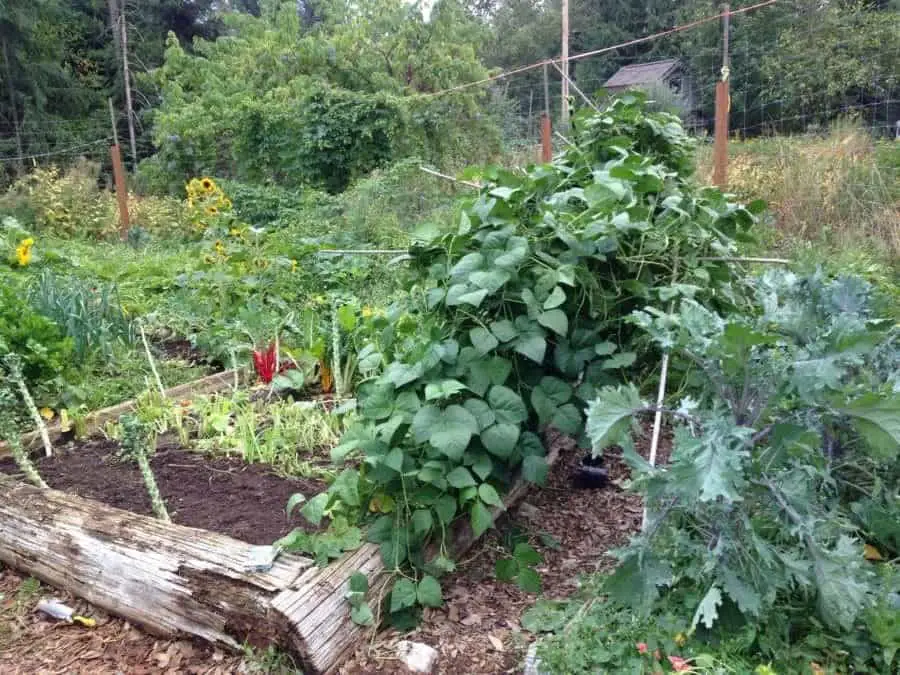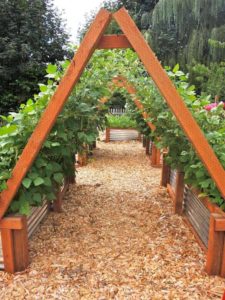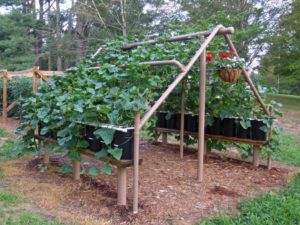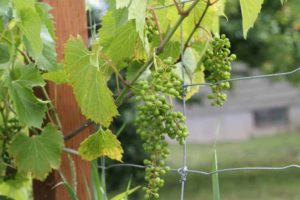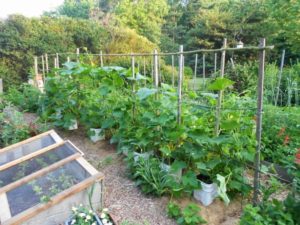A garden trellis is a great way to use vertical space to increase harvests.
Vertical gardening not only increases your growing space, but it adds really nice visual architecture to the garden. One of our favorite vertical gardening ideas was when we grew pole bean tunnels for our kids to run through. Using climbing plants is also a big element in permaculture design when creating food forests.
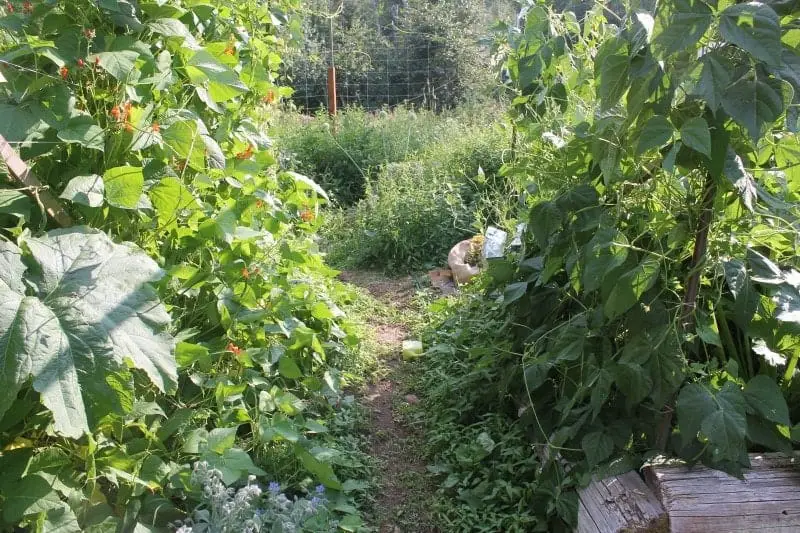
Climbing Plants for Trellis
There are plenty of great climbing vegetables and fruits for your trellises.
- Pole beans
- Scarlet Runner Beans
- Peas (sugar snap, shelling, and snow peas)
- Vining flowers such as: sweet peas, clematis, certain nasturtiums, morning glory
- Grapes
- Hardy Kiwi berries
- Certain squash varieties like costata romanesco, tromboncino or even little baby pumpkins like jack be little
- Grow cucumbers vertically
- Tomatoes- you can prune and trellis
- Hops
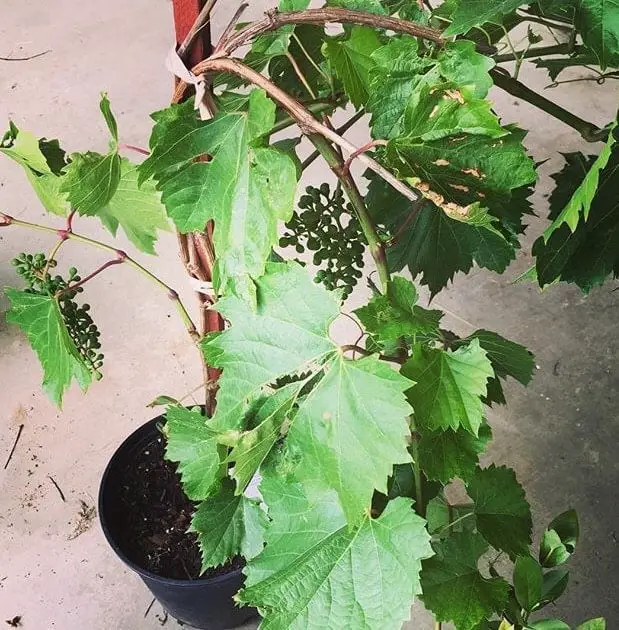
You need to make sure your garden trellis is strong enough to handle the weight of whatever you’re growing on it.
You don’t want to make these mistakes and have your trellis collapse mid-season! 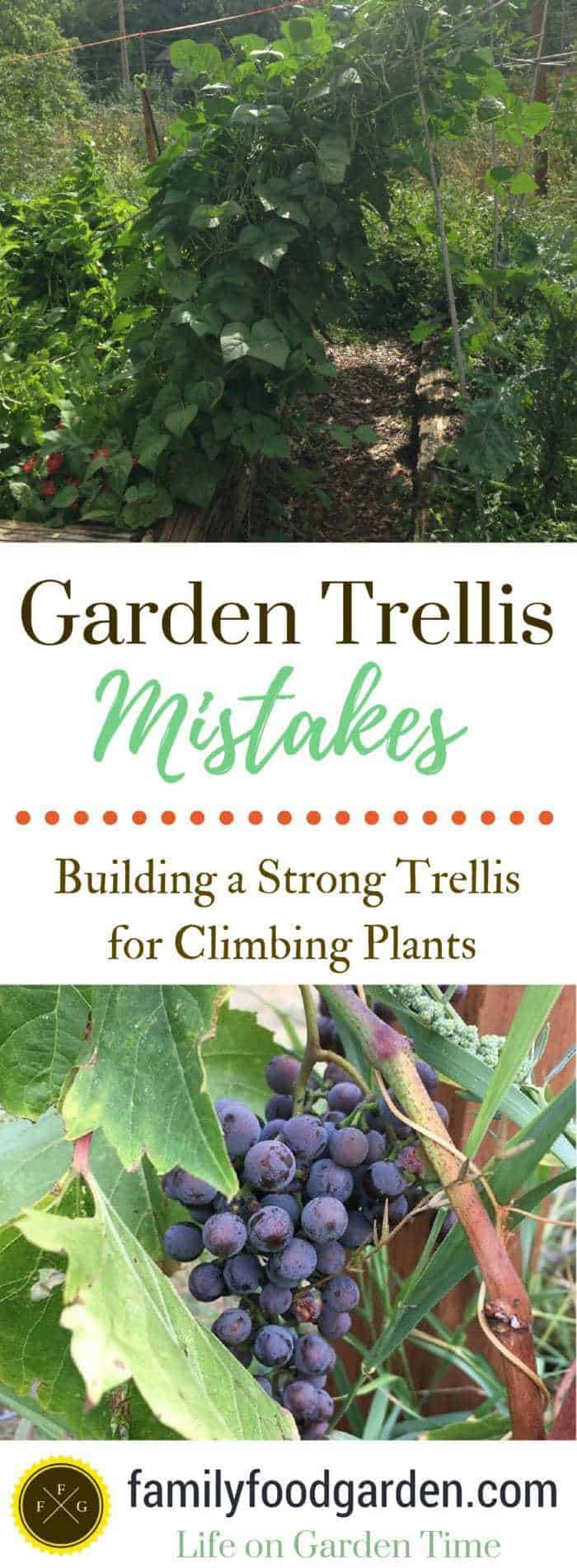
Sturdy Garden Trellis Tips
- A garden trellis for annuals like peas and beans might be different in strength and structure than perennial climbing plants like grapes.
- For annual climbers, pay attention to the seed packet for climbing plant size. For example some peas reach 4 feet, some as high as 12 feet. Pole beans tend to be heavier and continue to grow.
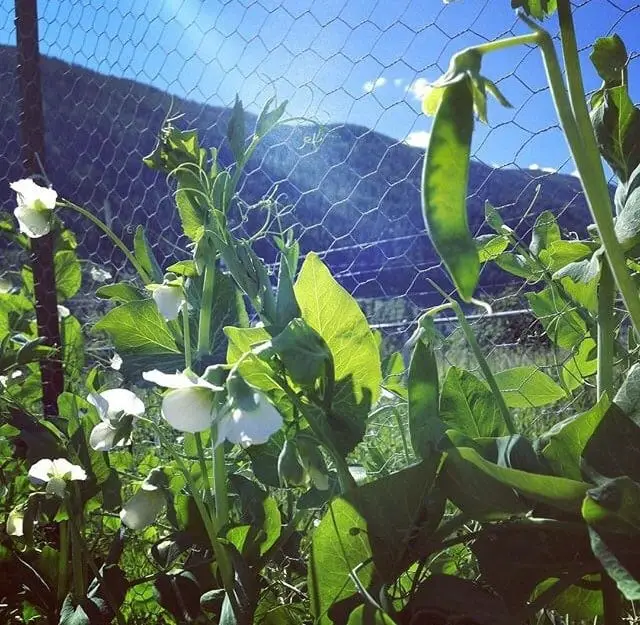
Build your garden trellis based on how the plants climb.
Peas for example have side tendrils that prefer to latch to something, pole beans tend to grow upwards and spiral around something like a pole. Too many pole beans at the base of a pole for example will cause too much competition and weight. Usually 3-4 plants per pole is good.
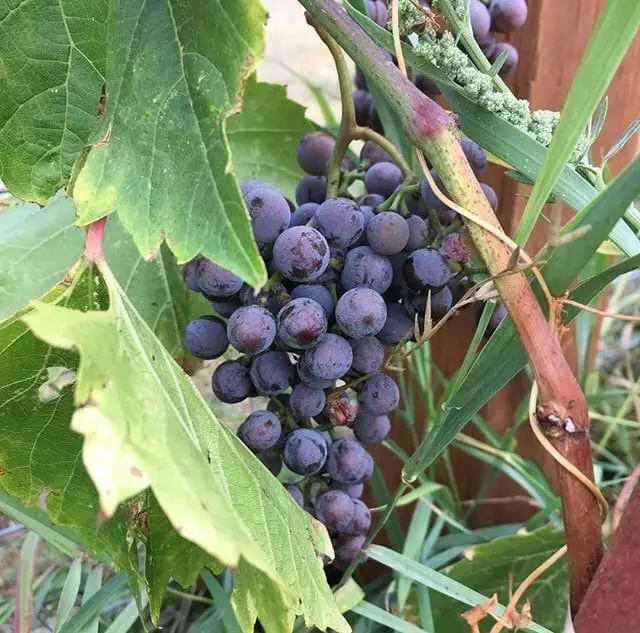
You need to think long-term when planting a vine like grapes.
Although it might take a few years to reach huge sizes, they will need a large and strong trellis to spread. Many people plant grapes on a pergola. You can also prune them the way a vineyards do.
Make the support posts are strong enough to handle the long-term weight.
Many garden trellises can handle weight early in the season only to collapse later on.
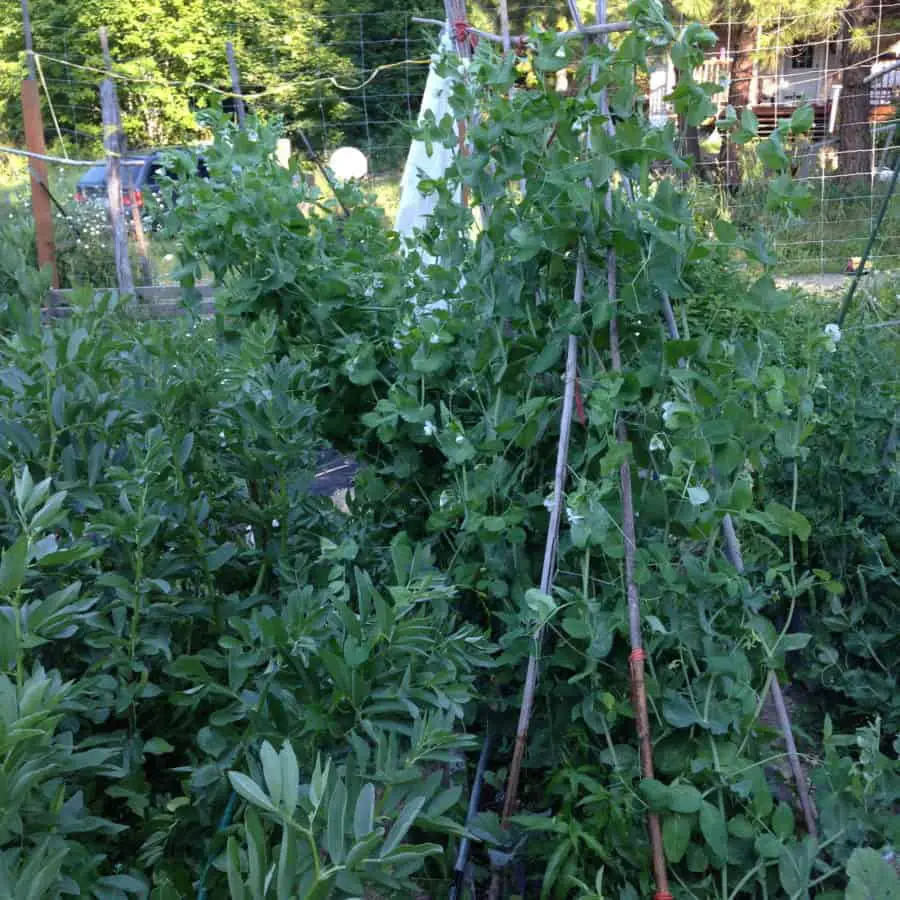
If you get lots of wind you need to make sure your trellis is extra strong
Often it’s a strong summer storm that will take down weaker wooden trellis structures that were fine before hand. I’ve found some of the strongest trellis has been using metal fence posts dug 2 feet deep and using chicken wire. If you can plan your garden beds against a fence line like deer/elk fence for the strongest support.
Be cautious using old or re-purposed support beams.
I’ve been a fan of bamboo poles to build a garden trellis teepee for beans, only to have them deteriorate within 3 years as the bamboo poles were not strong enough to support the beans anymore. In general, you need a very thick post wall structure trellis. If you’re goal is frugal gardening be careful the materials aren’t too old internally that they’ve started rotting.
Below you can see a collapsed tunnel from using the wrong size of post.
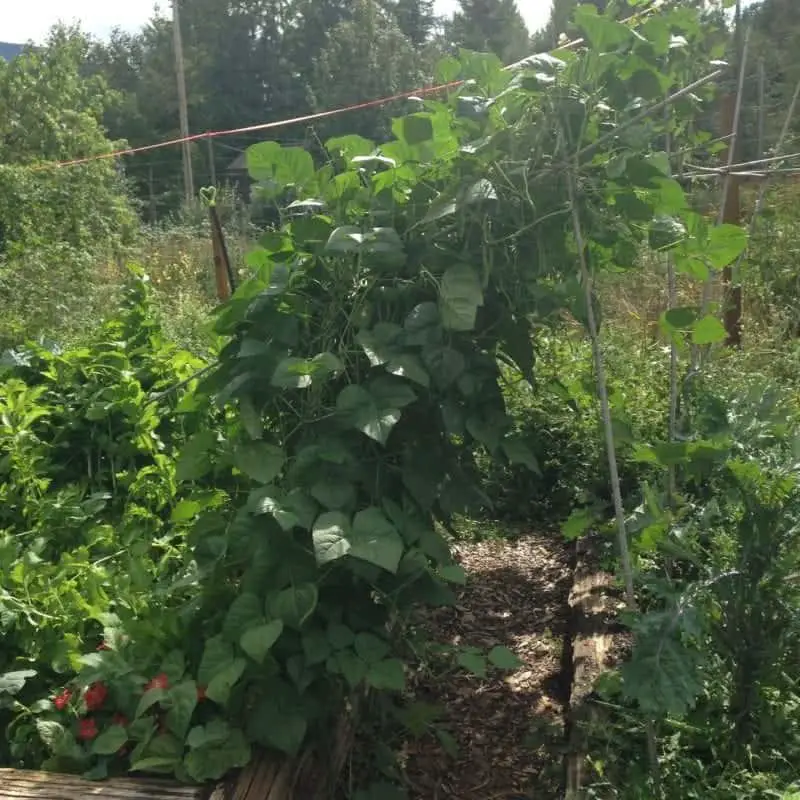
Certain vines reach enormous sizes over time.
Below you can see a hops vine that’s causing 8 foot elk fence to be pulled downwards. When planting perennial vines this is especially important. I would definitely consider hops an invasive vine from the 5 years we had growing it!
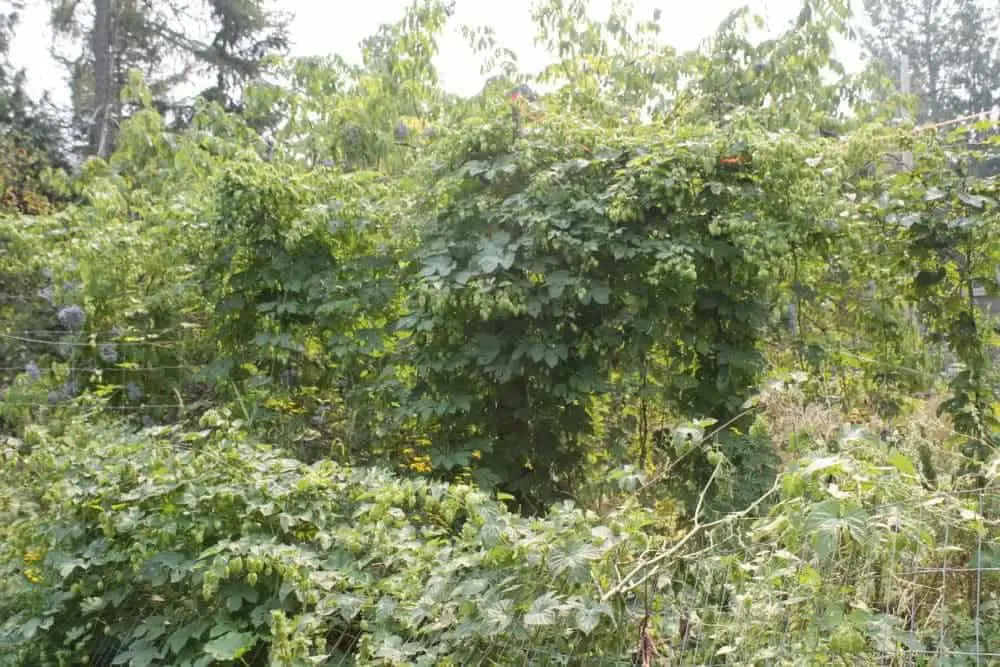
Teepee Trellis Tips
If the posts are too close together and narrow it won’t be enough support and will topple over. 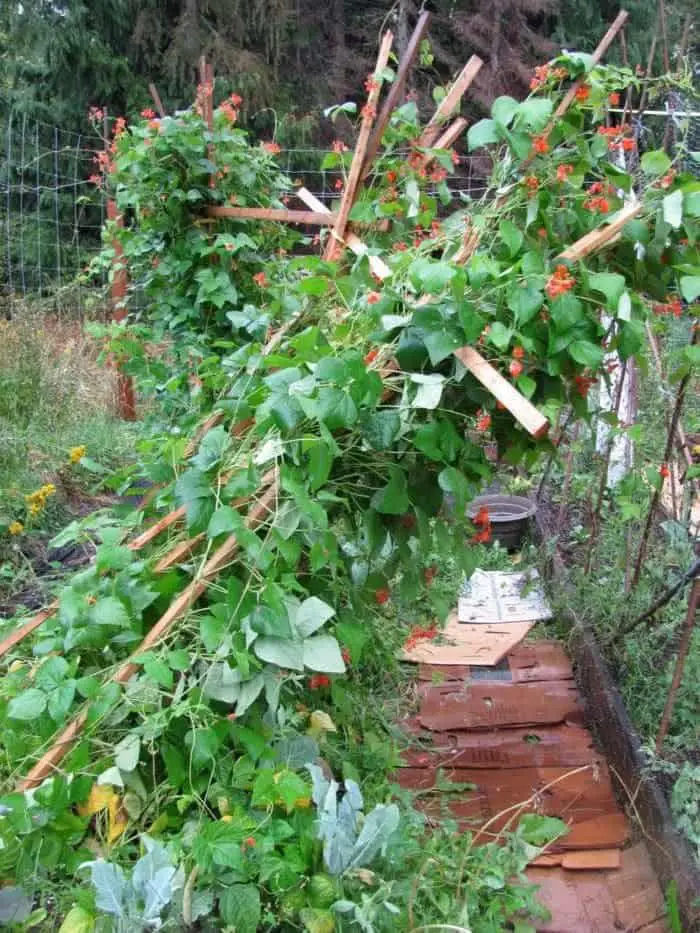
Here are some vertical gardening ideas for building a trellis.

